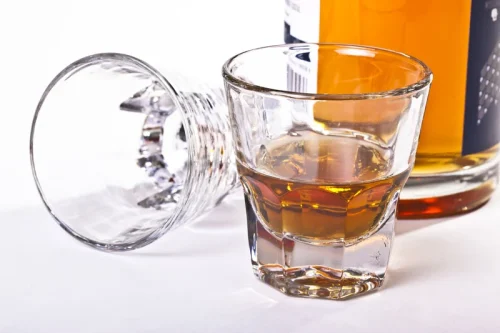
The past 20 years has seen growing acceptance of harm reduction, evidenced in U.S. public health policy as well as SUD treatment research. Thirty-two states now have legally authorized SSPs, a number which has doubled since 2014 (Fernández-Viña et al., 2020). Regarding SUD treatment, there has been a significant increase in availability of medication for opioid use disorder, especially buprenorphine, over the past two decades (opioid agonist therapies including buprenorphine are often placed under the “umbrella” of harm reduction treatments; Alderks, 2013). Nonabstinence goals https://ecosoberhouse.com/ have become more widely accepted in SUD treatment in much of Europe, and evidence suggests that acceptance of controlled drinking has increased among U.S. treatment providers since the 1980s and 1990s (Rosenberg, Grant, & Davis, 2020). Importantly, there has also been increasing acceptance of non-abstinence outcomes as a metric for assessing treatment effectiveness in SUD research, even at the highest levels of scientific leadership (Volkow, 2020). Many advocates of harm reduction believe the SUD treatment field is at a turning point in acceptance of nonabstinence approaches.

Replace Alcohol
In a clinical trial that included CD and abstinence training for a highly dependent alcoholic population, Rychtarik et al. (1987) reported 18 percent controlled drinkers and 20 percent abstinent (from 59 initial patients) at 5 to 6 year follow-up. Nor was it for Nordström and Berglund (1987), perhaps because they excluded “subjects who were never alcohol dependent.” In addition, Helzer et al. identified a sizable group (12%) of former alcoholics who drank a threshold of 7 drinks 4 times in a single month over the previous 3 years but who reported no adverse consequences or symptoms of alcohol dependence and for whom no such problems were uncovered from collateral records.
What is Controlled Drinking or Alcohol Moderation Management?

But with patience, persistence and these strategies at hand – you’re better equipped than ever before on this journey towards healthier living minus harmful drinking habits. Exercise is another key factor in recovery due to its numerous benefits such as stress reduction, improvement in mood and sleep patterns in addition to promoting overall wellbeing. Regular physical activity can act as a healthy coping mechanism when dealing with cravings or anxiety related to your efforts towards alcohol moderation management. Whether you’re considering moderation or complete abstinence, this article will provide information about how to begin an Alcohol Moderation Management (AMM), its effectiveness, potential drawbacks, and its applicability to people dealing with alcoholism. As such, I think these results are very encouraging in terms of offering another possible solution for individuals who are looking to reduce their alcohol consumption and the problems that keep creeping up along with it. Most of the information collected was self-reported by the participants, which is known to be somewhat problematic, so the researchers also contacted significant others who were used to corroborate the drinking behavior reported by the participants.
- In the context of “harm reduction,” individuals may make positivechanges in their lives that do not include reduced alcohol use and may consider themselves“in recovery” even though their AUD status remains unchanged (Denning and Little 2012).
- These answers will vary from individual to individual, and your choice of moderation vs. abstinence is a personal one.
- It caused heated debates, and for a long time, it has had a rather limited impact on professional treatment systems (Coldwell and Heather, 2006).
- Moreover, although previous studies have examined treated, non-treated andgeneral population samples, none has focused on individuals who identifythemselves as “in recovery” from alcohol problems.
- Although temperance originally meant moderation, the nineteenth-century TEMPERANCE MOVEMENT’S emphasis on complete abstinence from alcohol and the mid-twentieth century’s experience of the ALCOHOLICS ANONYMOUS movement have strongly influenced alcohol- and drug-abuse treatment goals in the United States.
- It’s heartbreaking to see loved ones caught in the grip of addiction, but there’s hope – research shows that many people find success with programmes aimed at reducing consumption.
What are legitimate nonabstinent outcomes for alcoholism?
The ability to control drinking varies significantly from person to person and is influenced by a range of factors including genetics, environment, emotional state, and individual psychology. For people suffering from alcohol controlled drinking vs abstinence use disorders, trying to moderate drinking isn’t advised and total abstinence is always recommended. Remember that every person’s journey is unique; there are no one-size-fits-all solutions for managing alcohol intake.

4. Consequences of abstinence-only treatment
- Thus, this is interesting to analyse further although the younger IPs in this article, with experience of 12-step treatment, are too few to allow for a separate analysis.
- In regard to help-seeking and problem severity, having attended at leastone 12-step meeting and the number of DSM-IV dependence symptoms were both significantlyrelated to non-abstinence.
- Treatment as usual groups consisted of standard, conventional treatments and 12 step facilitation.
- It is very important to note that this study specifically excluded people who had previously been admitted to alcohol or drug treatment as well as those who had symptoms of severe alcohol withdrawal at any point in their life (like delirium tremens and such).
3 Stepwise regressions: Non-abstinence
How Do You Practice Controlled Drinking?
- The current review highlights multiple important directions for future research related to nonabstinence SUD treatment.
- We categorised outcomes (in a slight change from the protocol10) into short (3-6 months), medium (6-12 months), and long (12-24 months) term outcomes.
- By doing so, you may even identify triggers that cause you to drink—for example, certain social situations, stress from work, or even boredom.
- Overall, 30 and 27 out of 64 studies were judged overall to have “some concerns” or to be at “high risk” of bias, respectively.
- Multivariable stepwise regressions (Table2) show that younger individuals were significantly more likely to benon-abstinent, and movement to the next oldest age category reduced the odds ofnon-abstinence by an average of 27%.
Associated Data
